Practice to Deceive Read online
Page 2
* * *
ISLAND COUNTY SHERIFF’S SERGEANT Rick Norrie was working the 1 P.M. to 8 P.M. shift that Saturday afternoon, the supervisor of patrol duties in the south sector of Island County. At 4:26, ICOM dispatched him to investigate a “possible death” at 6665 Wahl Road in Freeland. He arrived at the scene eight minutes later, the first of many sheriff’s officers and emergency responders to head for the “unexplained/possible death.”
He didn’t know what he would find. As with any call concerning a body, neither Norrie nor anyone else knew exactly what might have occurred. He could have responded to a heart attack victim, to someone who had suffered an accident, to a drunk sleeping it off, or to a suicide. The latter was the most likely; the holiday season is depressing for many people, and anyone who staffs crisis lines or works in public safety knows that suicides peak around Christmas and New Year’s.
To get to Wahl Road from the shopping center in Freeland, most drivers take Fish Road from Freeland’s shopping center, turning left on Woodard to its end, left on Lancaster Road, and then right on Wahl. Double Bluff beach was on the same side as the address given, and Mutiny Bay was across the road beyond a row of houses there.
Sergeant Norrie drove slowly down the narrow dirt driveway. He spotted the vehicle in question and saw that it was a yellow GEO Tracker, license number 128-NXQ. As he got out of his patrol unit fifteen feet away, Norrie immediately saw that the GEO’s front passenger door was open, and the dome light illuminated the front seat area. He could see a white male with short brown hair slumped over the steering wheel.
As he approached the open door, Norrie saw that the driver had apparently suffered serious head trauma. His forehead bulged with some kind of matter and large globules of blood. The man’s flannel shirt was soaked with drying red stains and Norrie noted that the driver’s-side door panel was also splattered with what appeared to be blood.
Still, Norrie wasn’t sure yet if the man was alive and unconscious or deceased. He moved to the driver’s window, which was lowered about four inches. Not really expecting a response, he spoke aloud, identifying himself as a sheriff’s deputy, as he reached in to touch the silent man’s right shoulder.
He felt no life at all; rigor mortis was well established, leaving the dead man frozen in his position behind the wheel.
Paramedics Darren Reid and William Brooks from Whidbey Island Fire Station 3 arrived a minute or so after Norrie did.
“I think he’s gone,” Norrie told Reid. “He’s in almost full rigor.”
Reid checked and confirmed what Norrie said.
The obvious expectation was that this violent death would prove to be a suicide.
The bleak spot in the woods was soon crowded with responders. A few minutes later, Officer Leif Haugen of the Langley Police Department and Deputy Laura Price of the sheriff’s office joined Norrie. They had passed some EMT rigs and an ambulance leaving the address given, but there were no sirens. That probably meant that whoever was down the driveway was dead.
Haugen and Norrie began to seal off a crime-scene area with yellow crime-scene tape while Price started taking photographs.
She saw that the dead man was probably in his early to midthirties. He had sandy-blond hair, and he obviously hadn’t shaved for a few days. The coagulated mass of blood seemed to be from a wound right in the center of his forehead at the bridge of his nose. Oddly, he had fragments of blue glass in his hair. Wondering at first what they were, Laura Price found the lens from sunglasses on the passenger side resting near the seat. Then she spotted the blue frame from the sunglasses on the driver’s-side floor.
It had been a gloomy few days and she wondered why anyone would be wearing sunglasses.
She saw that rain and some tree debris had blown into the passenger side, and noticed an envelope and other mail lying on the floor there, along with cans and paper cups. She looked in the backseat of the GEO; she saw no blood—only clothing, shoes, and trash—but she couldn’t see exactly what was there because of the dim light, and she didn’t want to disturb them.
Looking through the back window, Deputy Price observed a snow sled with coats lying on top of it.
The dead man had bled heavily and his plaid shirt, crotch, and thighs were drenched with it. The seat belt had blood on it, but it wasn’t latched.
His hands were also covered with blood and the steering wheel had grip imprints from his stained fingers. Price saw that he wore white socks with flip-flops, but the left-foot sandal was missing.
Moving around the vehicle, Laura Price took many photographs with 35-millimeter film.
Once the scene was contained and preliminary photos were taken, Rick Norrie asked Haugen and Price to begin a tentative canvass of nearby houses to see if anyone had heard anything unusual coming from the Blacks’ property in the past few days.
* * *
WHEN NICOLE LUA SAW blue lights whirling atop several deputy sheriffs’ cars a few doors down, she walked over to see what was going on. She hadn’t called the sheriff after all, but now she felt a sense of dread. She had probably been correct in assuming that there was something eerie about the parked car.
Whoever the dead person was, Nicole explained that she thought the body probably had been there the day before, too. She and her friend had noticed the SUV there almost exactly twenty-four hours earlier. It didn’t belong to anyone that she knew on Wahl Road, nor had she seen it before.
Who was the dead man? And why had he ended up in a small parking area off a narrow road that was shadowed by towering trees? No one driving by on Wahl Road would have seen the yellow Tracker. It seemed that he, or someone else perhaps, had chosen this hidden spot for just that reason.
The vehicle’s glove box was open. Later, neither officer could recall which of them had opened it. With extreme care, they removed the vehicle’s registration that lay on top of papers there. With a flashlight, they looked at the registered owner’s name.
It read Russel Douglas, age thirty-three, with an address at the Mission Ridge Apartments in Renton, Washington, a city southeast of Seattle. Norrie wondered what could have been so bad that a man this young would have shot himself.
It would take a postmortem exam to be sure, but it appeared that Douglas had sustained only that one wound—right in the middle of his forehead, just above the bridge of his nose. The bullet must have penetrated his sunglasses at that point, sending the broken glass all over.
Norrie noted a shell casing between the driver’s seat and the door. It looked to be from a .380 caliber bullet. The bronze casing would at least tell them what kind of gun they were looking for, although it was unlikely they would find it in the dark, even with the mass of auxiliary lighting the sheriff’s department was bringing in.
In the driver’s door itself, he saw a green and yellow sealed box of 30/30 caliber rounds. Maybe there were two weapons. Norrie didn’t open the box, but waited for detectives to arrive.
He did, however, continue to look for a gun that had fired the fatal shot into Russel’s forehead.
He couldn’t find it. Depending on the ejection recoil pattern, it might be in the dark rear seat of the Tracker, or it might even have flown out the passenger door, only to be swallowed up in the undergrowth of salal, sword ferns, kinnikinnick, and huckleberries.
Rick Norrie called Island County’s detective commander, Sergeant Mike Beech, advising that he was standing by on what appeared to be a suicide. He asked that one of the county’s detectives respond, as well as County Coroner Robert Bishop.
At 5:35 P.M., Detective Mike Birchfield pulled up to the scene and the death investigation was turned over to him. Less than an hour had passed since Sergeant Norrie first arrived at the death scene, but it seemed so much longer.
Soon, the pullout beside the driveway was almost as bright as day as the auxiliary lighting showed up and was turned on.
Lieutenant Harry Uncapher, an evidence technician, and Deputy Scott Davis joined the investigators working in the rain. Uncapher ba
gged the shell casing, papers, documents, and everything that might become vital physical evidence, and he sealed and labeled everything so the chain of evidence would be sacrosanct. He recovered a Nextel cell phone from the left visor, a black fanny pack with a checkbook, more personal papers, and identification documents.
Scott Davis took measurements to triangulate points that would show the precise spot where the Tracker sat. Later, he would draw the scene to scale.
Detective Birchfield asked Rick Norrie and Leif Haugen to extend the crime scene by roping off both an inner and outer circle around the Tracker to be sure that no one could accidentally step on items of possible evidence. He asked Laura Price to start a log that would show the names of anyone who might come inside the tapes, along with the times they arrived.
This wasn’t the first unattended death any of the officers had encountered, but it was still shocking. The sheer amount of blood on the dead man and in his car was appalling.
Detective Mark Plumberg, who was even more of a detail man than Birchfield, arrived at the scene. He had never had occasion to go to Wahl Road before. The two seasoned investigators would work this strange case together, although Birchfield would be the lead investigator in the beginning. They had no idea just how long the trail would be before they found out the baffling story behind the body in the woods.
It was probably better that they could not see what lay ahead, how long it would take to solve the puzzle of Russel Douglas’s death, or the tragedies the future would bring.
Indeed, one of them would not live to see the final denouement.
The two detectives saw that the Tracker’s keys were still in the ignition. They measured the driver’s window and saw it was lowered by 6.5 inches. Although it had been unhooked, the driver’s seat belt was still partially wound around his torso. It looked as if the dead man had rolled down his window to speak to someone. He might have been in the process of removing his seat belt before getting out of the car. More likely, Plumberg felt, someone had unbuckled the belt after he was shot.
Rick Norrie said he had looked for the gun to no avail. As they searched for the missing gun and failed to find it, Birchfield and Plumberg regretted that any of the first patrol officers on the scene had touched the yellow SUV. Although the sodden grass around the car probably wouldn’t have given up much in the way of footprints, they would never know, because several people had walked there by now.
And it was definitely beginning to look as if this might not be a suicide after all. Unless they found the gun within a reasonable distance from the Tracker, this could very well turn out to be a homicide. People who shoot themselves in the forehead cannot then fling the weapon many feet away.
Experienced detectives know that the manner of death should be viewed first as homicide, second as suicide, then accidental, natural, and finally, as undetermined. Because this had seemed to scream suicide, the scene wasn’t as untouched as Birchfield and Plumberg would have liked.
Mark Plumberg remembers standing on the edge of Wahl Road, and looking all around him. Something niggled at him.
“I saw how deserted it was. Totally out of easy access except for the few families who lived there in the winter. I said to myself ‘This is ridiculous! Why would the victim have come way out here—he had to have been lured out here by someone.’
“Mike Birchfield said he had that sense from the beginning, too.”
Even on that first night, Mark Plumberg was curious about something he noted. A small, partially coagulated pool of blood was next to the dead man’s hand, and that hand would have been directly below the gunshot wound on the bridge of his nose. It seemed to him that that odd stain should still have been on the victim’s hand if he had remained in the same position since the time of the shooting.
“But it wasn’t,” Plumberg said. “I thought then—and I still do—that someone had attempted to move the body for some reason—possibly looking for the bullet casing. That made me doubt even more that we were looking at a suicide.”
Still, working with only artificial light, the two detectives couldn’t say for sure where the casing was.
They would have to look for it in the morning.
PART TWO
* * *
Russ and Brenna
CHAPTER THREE
* * *
CORONER DR. ROBERT BISHOP released the body and it was taken to Burley’s Funeral Chapel to await autopsy. The Tracker would be towed to the Island County Criminal Justice Center to be stored in a locked sally port until the Washington State Patrol Crime Lab criminalists could process it.
It was after ten when Mark Plumberg and Mike Birchfield cleared the scene, leaving reserve deputies Bill Carpenter and Jay Geiler to provide security in case anyone—a killer or merely someone curious—should try to get inside the crime-scene tapes.
The detective team had their suspicions and their gut reactions, but the probe was embryonic at this point; the two uniformed officers who had done the initial canvass of nearby houses had located one possible witness who sounded as if she had seen the dead man’s car the day before.
Diane Bailey, who lived a short distance from the Blacks’ property where Russel Douglas was shot, gave a statement about a “boxy, small, bright yellow SUV” that was driving west along Wahl Road, as if the driver was searching for an address. That had been sometime between 11:30 A.M. and 1 P.M. on the twenty-sixth. She hadn’t paid that much attention to it until she saw the same vehicle backing out of her own driveway.
“It looked as though he’d seen my red Volvo parked there and realized he had the wrong address,” she said.
Ms. Bailey hadn’t had a clear view of the driver, but her recall did help to place the Tracker in the Double Bluff neighborhood sometime around noon on Friday.
* * *
MARK PLUMBERG AND MIKE BIRCHFIELD weren’t through for the night. They still faced one of the tasks that any cop hates—notifying the deceased’s next of kin. There is no easy way to break such awful news; police know that they will hear sobs and see tears or the shocked, frozen reaction on the faces of those the dead have loved and who have loved them.
Mike Birchfield knew of Russel Douglas; his wife, Brenna Douglas, had babysat with the detective’s children. Several deputies’ wives went to her beauty shop—Just B’s—to have her do their hair. That was one semilucky thing for the detectives; most residents on Whidbey Island knew each other, or they had mutual acquaintances.
And then there was the gossip line that they knew would begin beating jungle drums with both solid and mythical information within hours. They had to find Brenna soon and tell her what had happened before someone called her and bluntly gave her the news that her husband was dead of a gunshot wound to the head.
Russel Douglas might have been living in an apartment off-island, but his driver’s license gave his address on Furman Avenue in the Whidbey Island town of Langley. Mike Birchfield knew that that was Brenna’s current address. There had been rumors for months that Russel and Brenna were estranged and living apart; that could explain why Douglas had two addresses.
But they weren’t divorced.
* * *
IT WAS ABOUT A quarter after ten when Mike Birchfield and Mark Plumberg pulled into the driveway of Brenna Douglas’s home in Langley. There was a maroon van parked in the driveway, but there were no lights on in the house. Plumberg stayed back in the yard while Birchfield approached the front door. A large dog was in the yard, barking at him.
Birchfield shone his flashlight through the living room window, and saw a woman in a robe walking toward the front door.
“That’s Brenna,” Birchfield said.
She opened the door without hesitation. Squinting in the porch light, she asked, “Can I help you?”
Mike Birchfield showed her his identification as a sheriff’s detective and introduced her to Plumberg. As they walked into the living room, it appeared that she was ready for bed.
“Could you talk to us?” Plumberg asked,
wondering why she would open the door so readily when she saw two strange men in her yard.
“Come on in,” she said, opening the door wider. “What’s going on?”
“We want to talk with you about your husband,” Mike Birchfield said as they walked in. They stood awkwardly for a minute or two before he gestured toward the dining room: “Could we sit down at that table?”
Brenna Douglas seemed at ease as she led them toward the dining room. She asked no questions. Mark Plumberg pulled out a legal pad. He would take notes while Birchfield interviewed Brenna Douglas.
As they passed a chair near the front door, he saw a note on lined tablet paper there. It was addressed to “Russ,” and read: “The kids and I went out and we’ll be back later.”
It was a strange tableau. Even though it was fairly late at night and there were two detectives sitting with her, Brenna showed no curiosity about why they were there.
Birchfield began easily, asking about Russel Douglas’s hobbies, habits, and how her relationship with him was going. She answered with a tumble of words, and the sheriff’s men noted that she often spoke negatively of her husband.
“When did you see your husband last?” Birchfield asked.
“It was before noon yesterday,” Brenna Douglas said. “I called him several times on his cell phone yesterday—but he didn’t answer. I slept with my phone beside me, but he never called. I know he planned to go surfing.”
That didn’t seem strange. Mark Plumberg was a scuba diver himself, and he knew that the waters surrounding Whidbey Island drew surfers and divers any time of year as long as they had adequate protection from the cold. He wondered if she was concerned that Russel might have drowned—or disappeared in the dark water.
Brenna explained that she and Russel were still married, but that they had separated seven months before and he was living in Renton. Christmas weekend also happened to be his time to see their two children—Jack, eight, and Hannah, five.

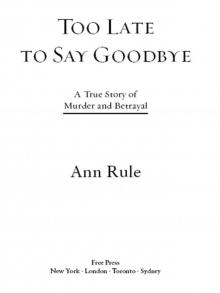 Too Late to Say Goodbye: A True Story of Murder and Betrayal
Too Late to Say Goodbye: A True Story of Murder and Betrayal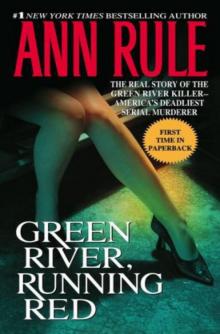 Green River, Running Red
Green River, Running Red Bitter Harvest
Bitter Harvest Dead by Sunset: Perfect Husband, Perfect Killer?
Dead by Sunset: Perfect Husband, Perfect Killer? Lust Killer
Lust Killer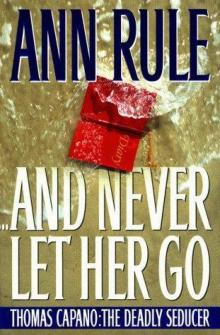 And Never Let Her Go: Thomas Capano: The Deadly Seducer
And Never Let Her Go: Thomas Capano: The Deadly Seducer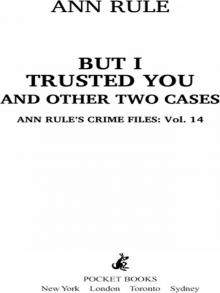 But I Trusted You and Other True Cases
But I Trusted You and Other True Cases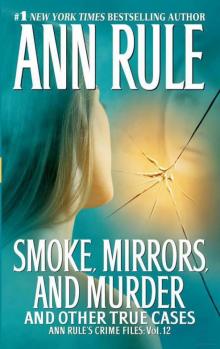 Smoke, Mirrors, and Murder and Other True Cases
Smoke, Mirrors, and Murder and Other True Cases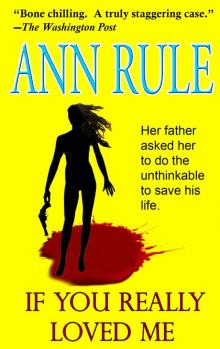 If You Really Loved Me
If You Really Loved Me Kiss Me, Kill Me and Other True Cases
Kiss Me, Kill Me and Other True Cases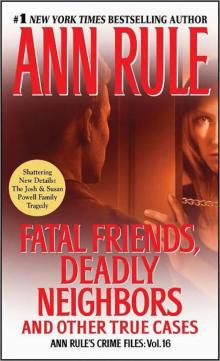 Fatal Friends, Deadly Neighbors and Other True Cases
Fatal Friends, Deadly Neighbors and Other True Cases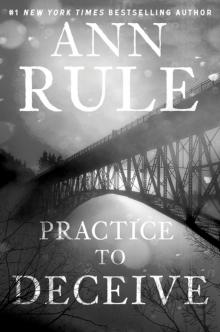 Practice to Deceive
Practice to Deceive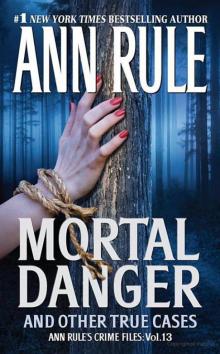 Mortal Danger and Other True Cases
Mortal Danger and Other True Cases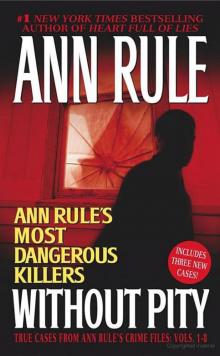 Without Pity: Ann Rule's Most Dangerous Killers
Without Pity: Ann Rule's Most Dangerous Killers Everything She Ever Wanted
Everything She Ever Wanted A Fever in the Heart and Other True Cases
A Fever in the Heart and Other True Cases In the Still of the Night
In the Still of the Night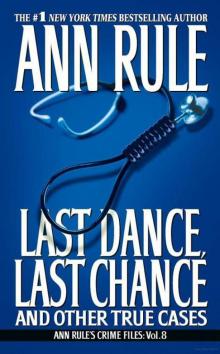 LAST DANCE, LAST CHANCE - and Other True Cases
LAST DANCE, LAST CHANCE - and Other True Cases A Rage to Kill
A Rage to Kill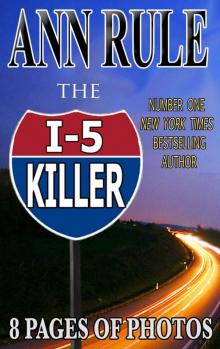 The I-5 Killer
The I-5 Killer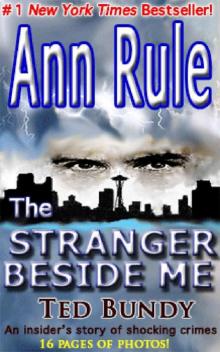 The Stranger Beside Me
The Stranger Beside Me Everything She Ever Wanted: A True Story of Obsessive Love, Murder, and Betrayal
Everything She Ever Wanted: A True Story of Obsessive Love, Murder, and Betrayal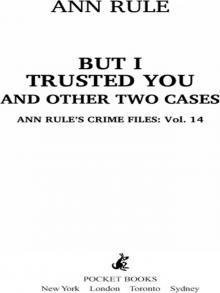 But I Trusted You
But I Trusted You Without Pity
Without Pity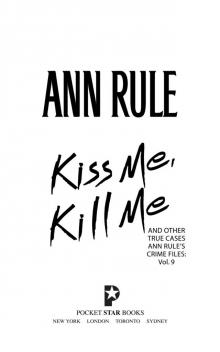 Kiss Me, Kill Me
Kiss Me, Kill Me Too Late to Say Goodbye
Too Late to Say Goodbye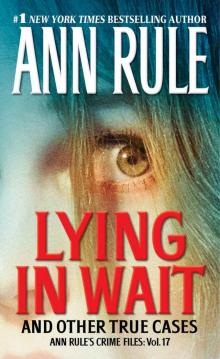 Lying in Wait
Lying in Wait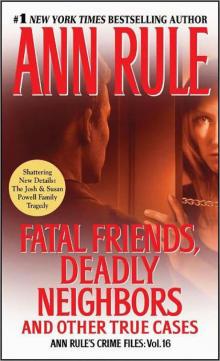 Fatal Friends, Deadly Neighbors
Fatal Friends, Deadly Neighbors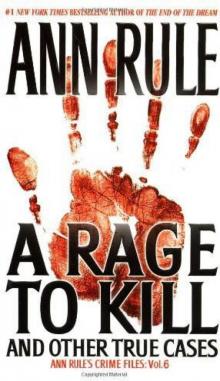 A Rage to Kill: And Other True Cases
A Rage to Kill: And Other True Cases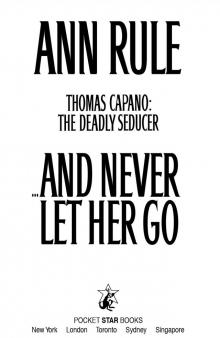 And Never Let Her Go
And Never Let Her Go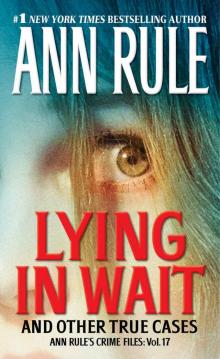 Lying in Wait Ann Rule's Crime Files Vol.17
Lying in Wait Ann Rule's Crime Files Vol.17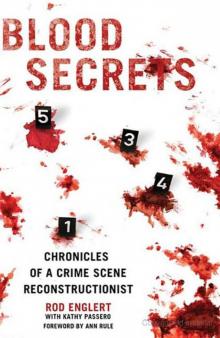 Blood Secrets: Chronicles of a Crime Scene Reconstructionist
Blood Secrets: Chronicles of a Crime Scene Reconstructionist No Regrets
No Regrets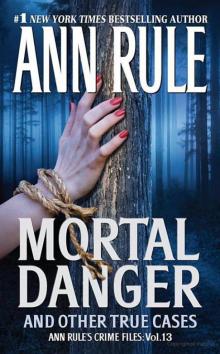 Mortal Danger
Mortal Danger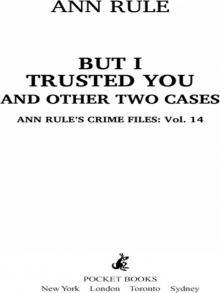 But I Trusted You: Ann Rule's Crime Files #14
But I Trusted You: Ann Rule's Crime Files #14 Empty Promises
Empty Promises Dead by Sunset
Dead by Sunset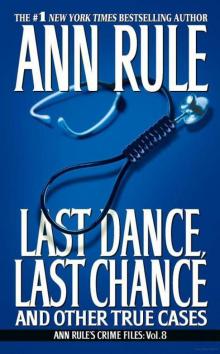 Last Dance, Last Chance
Last Dance, Last Chance Don't Look Behind You
Don't Look Behind You